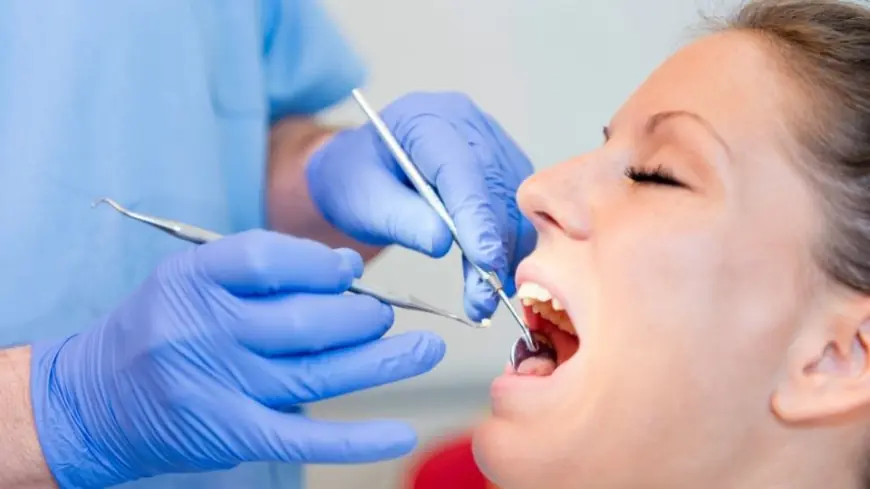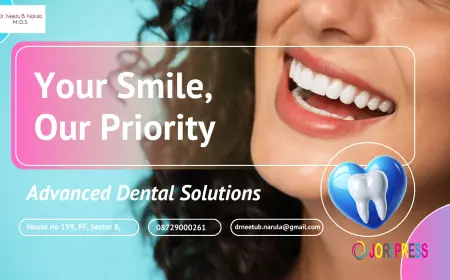Can You Get a Cavity Under a Filling? Understanding Secondary Decay
dental tooth filling in Dubai

If you have ever received a dental tooth filling in Dubai, you might wonder if it’s still possible to develop a cavity underneath the filling. The answer is yes—secondary decay, or recurrent decay, can occur beneath or around existing fillings if oral hygiene is not maintained or if the filling fails. Understanding how secondary decay happens, its risks, and how to prevent it is crucial for maintaining long-term dental health and preserving your restored teeth.
What Is Secondary Decay:
Secondary decay refers to new decay that forms around the edges or beneath an existing filling. Over time, fillings can wear down, crack, or shrink slightly, creating tiny gaps between the filling and the tooth. These gaps allow bacteria and food particles to seep in and cause further decay, even though the tooth has already been treated.
Causes of Cavities Under Fillings:
Several factors contribute to secondary decay, including poor oral hygiene, high sugar intake, and improper dental care. Additionally, fillings that are improperly placed or made from materials prone to shrinkage can increase the risk. Wear and tear from chewing, grinding, or trauma may also compromise the integrity of the filling and allow bacteria to invade.
Symptoms Indicating Secondary Decay:
Cavities beneath fillings often go unnoticed in their early stages because they occur under the surface. However, as decay progresses, symptoms such as sensitivity to hot, cold, or sweet foods, mild toothache, or visible discoloration near the filling edges may appear. Regular dental check-ups and X-rays are vital to detect secondary decay early.
The Role of Dental Materials:
The choice of filling material can influence the likelihood of secondary decay. Composite resin fillings, commonly used in clinics offering dental tooth filling in Dubai, bond directly to the tooth and provide a tighter seal compared to traditional amalgam. However, no material is entirely immune to wear, and proper maintenance is essential regardless of the filling type.
Diagnosing Secondary Decay:
Dentists use a combination of visual examination, dental probes, and radiographs (X-rays) to diagnose secondary decay. X-rays are particularly helpful in spotting decay beneath fillings that are not visible to the naked eye. Early diagnosis allows for less invasive treatments and better preservation of the tooth structure.
Treatment Options for Cavities Under Fillings:
Treatment for secondary decay depends on the extent of the decay. Small areas may be treated by removing the old filling and replacing it with a new one after cleaning the cavity. In more severe cases, where decay affects the tooth’s pulp or structure, root canal treatment or crowns may be necessary to save the tooth.
Preventing Secondary Decay:
Preventing cavities under fillings largely depends on good oral hygiene habits and regular dental visits. Brushing twice daily with fluoride toothpaste, flossing to remove plaque between teeth, and limiting sugary foods and drinks reduce bacterial buildup. Using antibacterial mouth rinses and attending professional cleanings also helps keep decay at bay.
Importance of Regular Dental Check-Ups:
Regular dental appointments are crucial for monitoring the health of your fillings and detecting any signs of secondary decay early. Dentists providing dental tooth filling in Dubai recommend check-ups every six months or as advised based on individual risk factors. Timely intervention can prevent minor issues from becoming extensive problems.
How Secondary Decay Affects Long-Term Oral Health:
If left untreated, secondary decay can lead to further tooth damage, infection, pain, and even tooth loss. The longer decay progresses beneath a filling, the more complicated and costly treatment becomes. Maintaining your restorations through preventive care and routine dental evaluations ensures your fillings last longer and your teeth remain healthy.
Final Thoughts:
Secondary decay under fillings is a common but preventable issue that underscores the importance of consistent oral hygiene and regular dental care. If you have had a dental tooth filling in Dubai, stay vigilant about monitoring your teeth and scheduling dental visits. By understanding secondary decay, you can protect your smile and enjoy the benefits of your dental restorations for years to come.
What's Your Reaction?
 Like
0
Like
0
 Dislike
0
Dislike
0
 Love
0
Love
0
 Funny
0
Funny
0
 Angry
0
Angry
0
 Sad
0
Sad
0
 Wow
0
Wow
0



















































